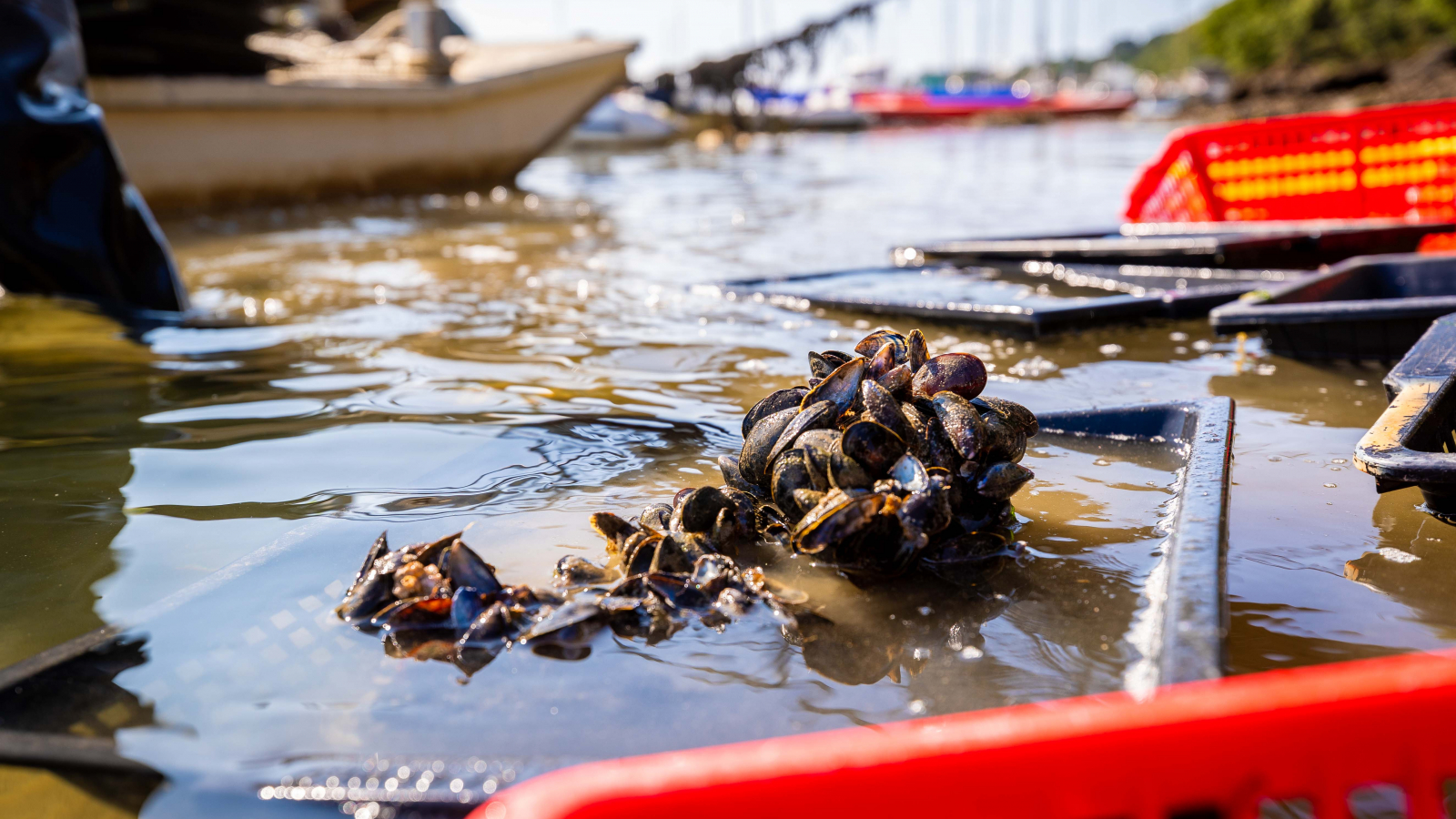Farming adapted to the environment
Once numerous, mussel farms disappeared in the 1950s due to water pollution from industrial activity. A "Programme de reconquête de la qualité des eaux" (programme to restore water quality) has enabled the Laïta to regain good conditions for river mussel farming. Since 2017, Leslie and Julien's Les Moules de la Laïta farm has relaunched this activity and reintroduced the species to the Stervilin cove. They use pocket cultivation, a technique that is not widely used, to allow the mussels to adapt as best they can to their environment, as the sandbanks move. It's a small production that makes it a unique product!
The abundance of mineral salts, the tides and the optimal climatic conditions (fresh water and a temperate climate) make the ria de la Laïta a breeding ground for phytoplankton.

Seasonal cultivation: mussels are sown in spring and harvested at the end of summer the following year.
Oysters have a much longer growth cycle: it takes at least 3 years to produce an oyster of edible size and quality.

Mussels, a concentrate of virtues
From their birth in the open sea off the island of Groix to their maturing in the Laïta, mussels develop incomparable nutritional virtues!
Brewed with seawater from the open sea, their flesh is finer and more tender than that of the bouchot mussel. They are also larger (between 5 and 7 cm).
Thanks to its natural and highly selective diet of phytoplankton, the mussel also provides us with a multitude of vitamins, fatty acids and minerals: omega-3s, magnesium, iodine, vitamins B12, B1, B2, C and E, iron and calcium... As with oysters, mussels are low in calories, making them a great way to keep your figure, with around 100 kcal per 100 grams and a rich source of calcium.
20g of protein per 100g (as much as meat for the same weight of flesh) - a healthy cocktail for keeping in shape every day!

1000 and 1 ways to cook mussels
Cooking in a pot: with marinière, stock, beer, white wine, etc.
With chopped vegetables: onions, green onions, celery, garlic, carrots, tomatoes, etc.
With spices: curry, chilli, saffron, turmeric, cumin, pepper, dried or fresh herbs, lemon juice... Or with cream or cheese.
In dishes: in paella, in gratins, in soups, soups, stews... sauerkraut from the sea, in omelettes, in chowder with other fish and seafood, cold in salads, as an aperitif, in vinegar, baked au gratin with pesto or garlic butter, in tomato sauce with saffron, Indian style with saffron and coconut milk, in Thai or exotic sweet and sour recipes...


